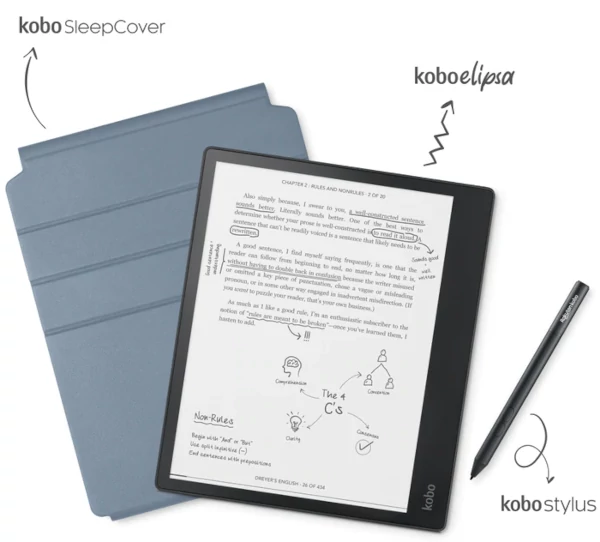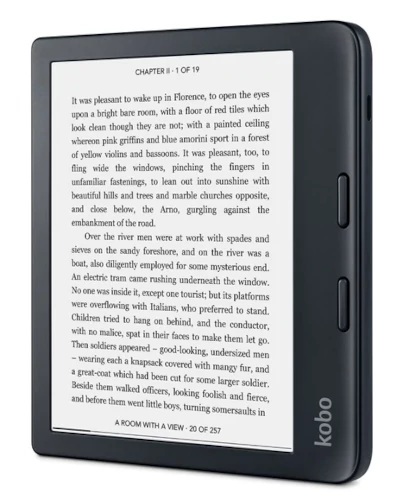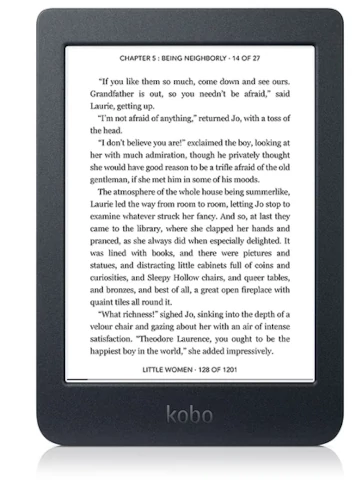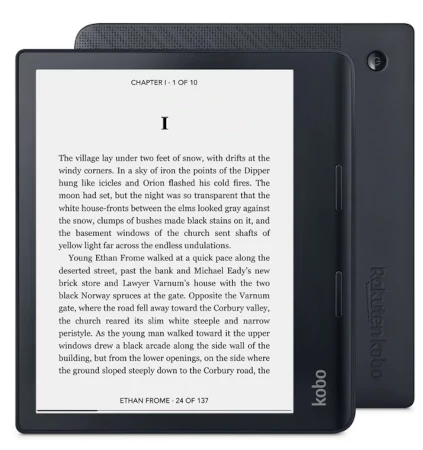
I’m a bookworm. No, much worse – a reading junkie! At least as long as I’m in a place, like a job or something. Reading has always been an escape from the here and now, from being stuck, from the mills of everyday life.
On the road was and is not like that, there is enough happening around me, there are stories lying „on the road“, so to speak. But I usually have a book with me, for in between times. …
And then there is a thick travel guide for the destination region for long-distance journeys – and we have a kilo together again. It’s just as well that there are eBooks now… isn’t it?
[contains *advertising]
Carrying books or the eReader in your pocket?
This is a contentious issue on which I cannot and do not want to take a clear position. I think both are good. Books* have something, and you can flip through them with three fingers between the pages – that’s not possible with eBooks*. But how many forests are felled for it… – I’m sure I already have a tree on my shelf. On the other hand, these books are stored CO2, at least as long as my children and grandchildren pass on my books.
The eReader remains small even with 1000 books
But the eReader* is small and handy, and if I load a thousand thick rind on it – a bookshelf in postcard format! I have such a tiny one* so far, because I just wanted to try it and see what it’s like to read on such a device – it fits perfectly into my shirt pockets. So it’s great for travelling by train – let it slide into your pocket when changing trains, endless hours of reading in an storage. I have 8GB internal memory in the eReader and already several hundred books on it. So far this is only a fraction of the available memory.
The train can’t be as late as it should be to give me time to read. And the energy consumption? Well, maybe every two weeks I have to recharge. However, the energy input for the production of the eReader should be considered here, which is probably much more important. Let’s hope that such a thing works as long as possible. With my chintzy-device this is more than 5 years already… apart from the initial quirks (he likes to turn the pages) nothing new has been added so far. Ok, it’s nothing against a multiple inherited bookshelf, but compared to the new-fangled smartphones with an average lifetime of 16 months ….

In the meantime, the eReader has become my favourite reading utensil for when I am on the road. Because of the small size and the hardly existing weight. You can read novels*, which you browse through one after the other, just as well with the eBook as in a paper book. It becomes more difficult with technical literature, where you often want to leaf through… and as said, the 3 fingers ….
Clarity in reference books?
And this is exactly the catch with travel guides*. Today, these are usually also available either as an eBook or as a paper edition. The price difference is, as with novels, usually only 1 – 2 € (the eBooks are most cheaper). Actually, the travel guides – eBooks should beat the paperback clearly – it is no problem to load 3, 4 or more travel guides for a larger long-distance trip with the same weight and packing size on the eReader!
However, the handling is quite cumbersome – if you don’t read travel guides like novels in one go. I don’t do it that way – you have to turn the pages, compare, look up, back, look up again and look at the map here. And so far, eReaders have hardly any added value compared to paper books. It would be conceivable after all – map linked and as a pop-up or museum with cross-reference to the appropriate public transport line… everything is stuck in its infancy.
Since you can’t do that with your fingers, you will have to get used to it. I have to get used to it, too. The weight advantage alone convinces me. It is already practical to have the travel tips with you in small format.
Book platforms and foreign languages
Anyway, there’s endless reading. For literature that becomes „in the public domain“ 70 years after the death of the author, i.e. the copyrights have expired, you can find book platforms on the Internet that offer these books for free. I have a whole collection of classics like Jules Verne, Stefan Zweig, Charles Dickens, Victor Hugo, Edmont Dantes and others, sometimes whole series, sometimes even in English.
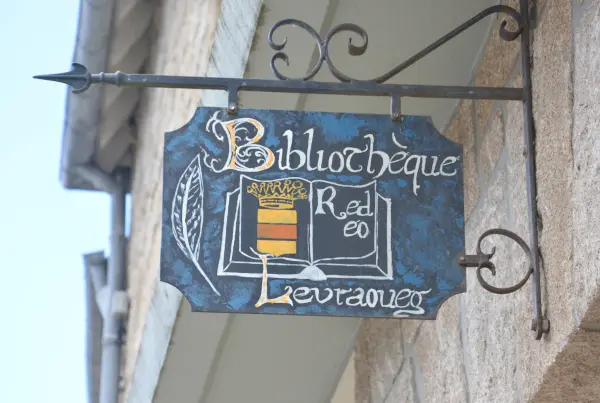
Because there is another advantage – the eReaders can show foreign languages – if you love Spanish or Russian, you can download books in these languages and start reading! Even better – you can download dictionaries for your favourite foreign languages. If a word comes up in your novel that you don’t know yet – just mark it, click on „Dictionary“ and the translation will be shown to you practically „in time“. eBooks therefore help a lot in understanding foreign languages, at least in the written language.
In the meantime, many larger libraries offer registered readers the possibility of „on-lending„, i.e. borrowing eBooks in the same way as traditional book lending.
Copyright and copy protection
Since I was just with the copyright – also on it is still to be paid attention. Many electronic media offerings, and so also eBooks, are equipped with a technical copyright barrier, i.e. copy protection: DRM digital rights management. If you purchased your eBook legally, you can decrypt your copy for your device – if you are registered with Adobe, because DRM is controlled by them. And the book will only work on your eReader device – unlike a paper book, you cannot lend your eBook to friends, children, partners or the like (unless you always give your whole eReader with you). If your device breaks, the book is gone – the copy remains encrypted on other devices. A clear disadvantage compared to the paper book! The American mail order company mentioned earlier is a great friend of DRM. He can sell some eBooks several times.
Fortunately, there is enough to read what is not DRM-protected*. Many books do not have a key and the eBook file can be copied freely. You can and have the right to share these books like your paper books from the shelf with friends and family members. To prevent this from getting out of hand and to ensure that all these free copies will eventually appear on online platforms, a signature has been invented: The eBooks are electronically watermarked at the time of purchase to ensure that the book’s path remains traceable.
In the German speaking regions watermarking is the copyright standard. So, exchanging eBooks with family and friends is ok, but exchanging or even selling them on the internet is still forbidden – at least for eBooks with watermarks. Even a „resale of used eBooks“ to online platforms is illegal in Europe according to a ruling of the European Court of Justice (Case C-263/18) of December 2019, reports the digital magazine t3n.
eReader technology
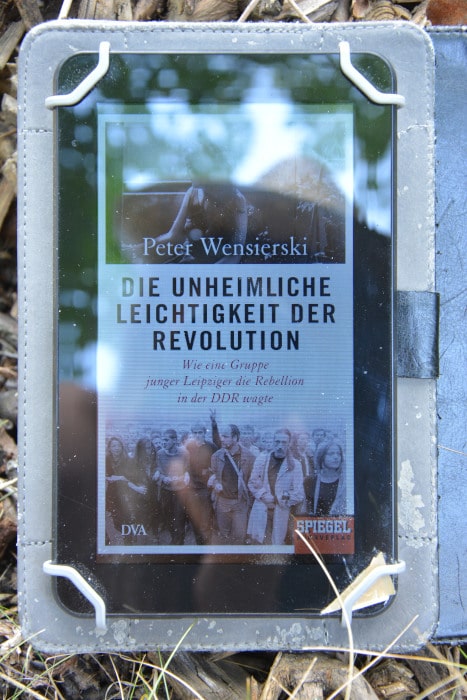
Technically speaking, the eReaders have developed quite well. For example, you can read eBooks on a tablet or smartphone with the moon-Reader app, but this is not comparable. The big difference is the display with e-Ink and paperwhite technology. Even the best tablet displays dazzle and reflect in the sun. With paperwhite eReader display you can read on the beach without a parasol. There is hardly any difference to a printed book. Plus, many of the latest models are even waterproof*. You can read your crime thriller in the bathtub, drop the thing in the water in shock at the murderer… and continue reading underwater. At least a few lines…
Note the file formats!
Otherwise… think twice before you buy. There are several systems or file formats on the market. Special eBook formats are .epub and .mobi. And that’s about the same as choosing a camera system. The lenses only fit to this one system. Has not been an issue when buying a book.
There is a class of eReaders for .mobi format only, that help to underpin the monopoly of an American mail order company. And he was original a bookseller! The problem – all books have to be bought again from this dealer, because the readers can only handle the company’s own format.
The .epub format, on the other hand, is widely used. There are a number of different eReaders from various providers for this purpose. And above all many booksellers or eBook shops. Meanwhile, a number of „self-marketing publishers“ are also establishing themselves, where anyone can upload their creations, convert them into ePub and offer them for sale without any editing or other preliminary checks. Free of charge or with costs. Some of them are not even that bad…
The file formats .txt, .pdf are displayed – most of the time the embedded functions such as outline, graphic zoom, link display – if you are logged in in a wifi network – will also work. Typically for e-readers, a special eBook format such as the free format ePub or the dealer-specific Mobi is used.
Touchscreen and wifi – modern features on eReaders
You can choose between portrait and landscape format at the touch of a button. The eReaders now work with touch screens for the most part. For example, you can turn the page with a fingertip or with a page-turning button on the side.
As a rule, the readers currently on the market are wifi-capable, so that you can get the next book directly online from the eBook shop of your choice. Some brands in Germany even have free access to the T-online-hotspot (after registration via the bookseller) included.
Good advice – a protective cover for the eReader
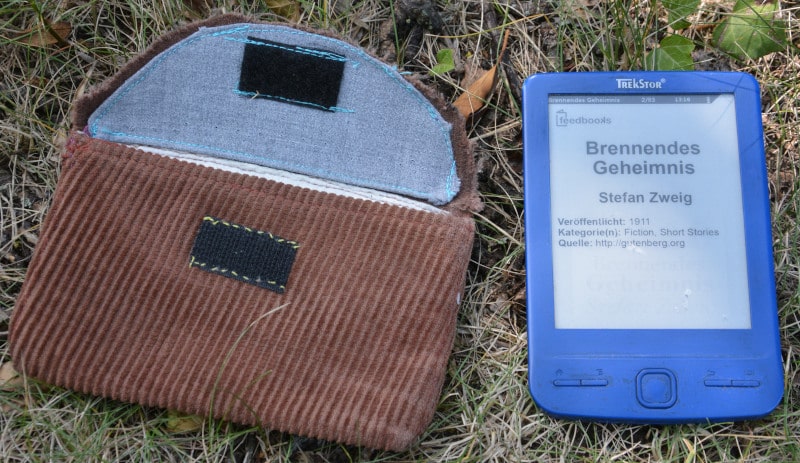
Despite the improved robustness, I would advise you to buy the matching protective cover* with the eReader. Unfortunately I took my time with it. I wanted to sew the cover from leftover fabric myself, but as it happens, I didn’t start right away. That’s why the eReader often poke unprotected in my backpack side pocket and now has two small pressure points on the display, where I sometimes have to guess which two letters are hidden in the mud. Often no problem, but it happens that two words would fit both from the visible letters and the content – with opposite statements. Well, wise from harm, that’s how you learn. He now has the protective cover and as I said, it still lasts for more than 5 years.
Size….
About the size of the eReader, that’s a matter of taste, a matter of eyes (although the font sizes can be adjusted gradually – also an advantage compared to books, especially when you get older) 🙂
Mine really only has postcard size and is pretty good for travelling. Not perfect – it can only display graphics and not yet maps or something… just font. It just doesn’t take up any space. It’s worth comparing the features when you buy it.
Smaller low-cost eReaders are also often technically „slimmed down“. Not in terms of readability, but in terms of „all around“. Whether, for example, dictionaries can be integrated, whether wlan is „onboard“ or to what extent robustness is guaranteed, would be criteria that require testing. If you need all this, you will have to dig deeper into your pocket (dictionary is really great!). If you just want to read, even the simplest, cheapest eReader* will do it.
Read for nights on end thanks to illuminated display
Which is great in the meantime, there are more and more of these eReaders with direct display lighting. So you can read in your tent, hostel dorm or couchette without a flashlight and nobody feels disturbed. Of course this is a bit at the expense of battery life. If you are traveling in winter and have to bridge long nights outside or on the long distance bus, you will appreciate the lighting.
Removable storage or cloud?
In terms of storage space, the trend is now moving away from the plug-in (micro) SD card towards cloud storage. This is partly offered by the providers, partly by your eBook shops. This means that the eReaders have a built-in memory of some GB (currently mostly 8GB, 6GB for books, that’s enough for a while) 🙂 but less and less often a memory expansion. I’m still attached to my own physical memory, cloud makes me insecure. There are many cloud providers who have now given up – and gone is your super library! So – a back-up on your home library hard disk is highly recommended!
For me, part of the online knick-knacks is the reading synchronization. This means that if you’re on the road on several devices at the same time and your eBook is somewhere in the cloud, you can continue reading with the device you have at hand, whether it’s a smartphone, your eReader or PC. Compatible systems required. I do not need them. I only need one device, I only have one head.
Conclusion
Sure, the decision for book or eReader is not easy. Especially since the book is a familiar, traditional and proven medium, whose advantages and disadvantages can be easily assessed by everyone. The sales share of eBooks for everyday literature in Germany is probably only about 6%. Even in the USA the ratio has levelled off at 20% compared to 80% for classic books. Contrary to expectations, older readers in particular are inclined towards eBooks and eReaders – among other things because of the possibilities of adapting the font size. (Source: t3n – digital magazine)
How the eBook development looks at present, which equipment eReader can offer meanwhile and where for me advantages and disadvantages lie with the eBook, I have shown for the current conditions. From time to time I will complete and update the article, because the eReader development continues
I hope I could help you a little bit with your considerations.
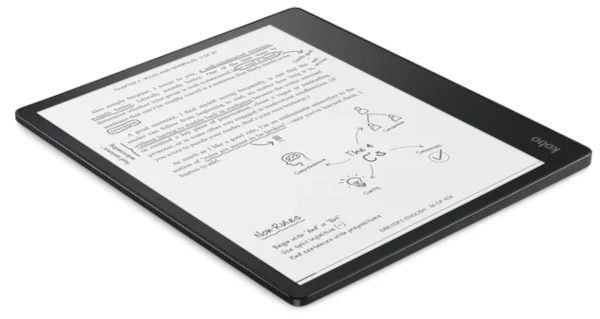
Share on social media!
If you have some time before you start your next book and maybe you are serving your social media channels anyway, I would be happy if you share the link to this post. Thanks!
Reference to advertising links
The links with * are so-called affiliate links. If you go to a shop page and buy something there, sunny trails blog get a small commission. There are no additional costs for you, because the commission is already included in the pricing.

